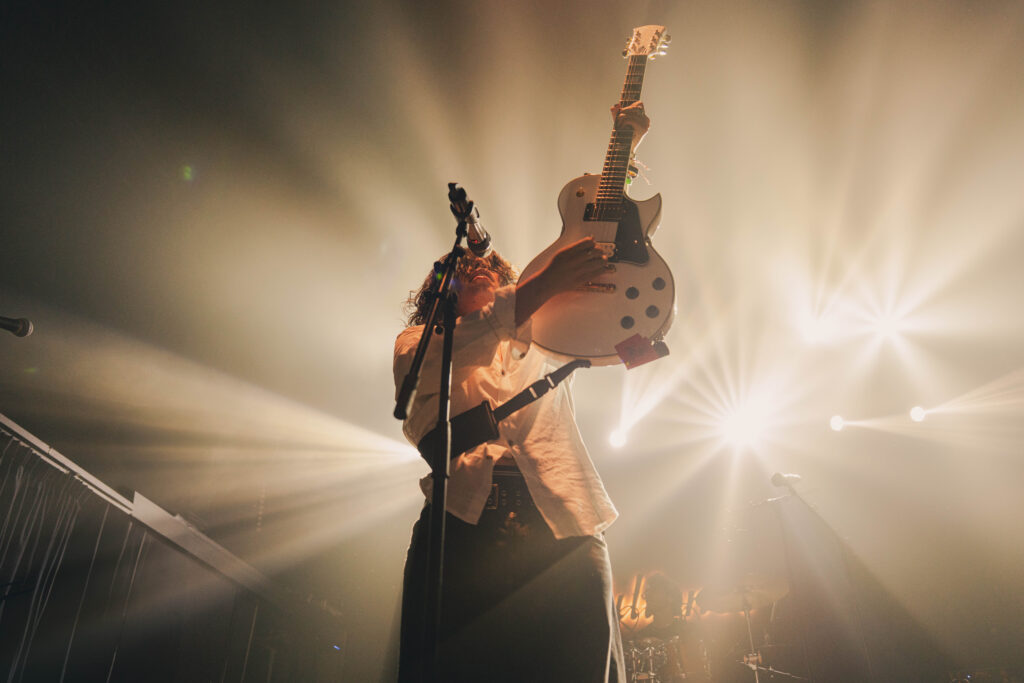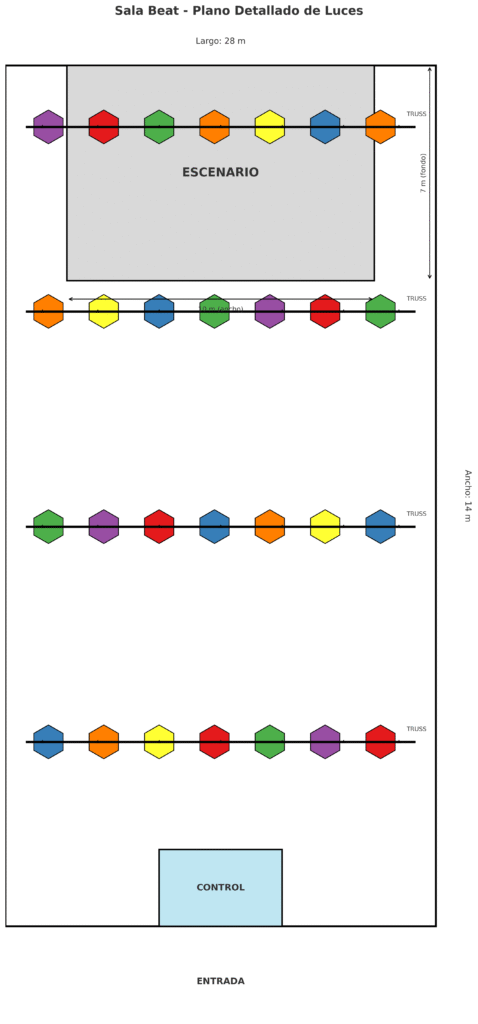What It’s Like to Do a Concert
Stage Lighting Design
If you’ve ever been to a concert, a theatre show, or any artistic performance with full lighting design, you know how immersive the experience can be. What many don’t see is all the work happening behind the scenes: departments like stage lighting design, sound, marketing, stage design, and more. All these teams work to create one of the best moments of our lives and give artists the tools to bring their full potential to the stage.

In this post, I want to share some of my journey in handling concert lighting design for a punk-rock band we manage, which performed at a festival inside a closed venue.
I’ve always been a curious person, and working with a low-budget stage lighting mindset means doing more with less. With limited funds, we aimed for perfect performance, even with a small team. We had nearly everything ready, except someone guiding the lighting stage setup, so I took on that role.
I researched the role thoroughly, learned from experienced mentors, and now I want anyone interested in becoming a stage lighting designer to get a clear understanding of the day-to-day responsibilities and have their questions answered.
Without further ado, here’s the breakdown: Half a month as a Lighting Designer.
1. Meeting with the Artist and Creative Team
First thing: the artist’s vision comes first. We can’t go in with our ideas without understanding what the artist or their artistic team wants. I ask them how they imagine the stage looks, what style they expect, and what they want to show to their audience. From that, I built my proposal.
We request the setlist for the event and all necessary details to align with the artist’s goals. This step is vital; even odd questions can now save a lot of work later.
Some questions I might ask:
- What colors do you imagine for the song “__________”?
- Is there a live performance reference you’d like us to draw inspiration from?
- Any key theme from this album you want to highlight on stage?
Listening to the setlist, I note what each song makes me feel: euphoria, intensity, sadness, whatever reacts in me. I keep notes on my phone or paper; they often become sparks for lighting ideas.
If there’s an unreleased song, we try to get at least a demo. If that’s not possible, we work from notes, but it’s delicate and sometimes an NDA is involved.
Then, I coordinate with the Stage Manager and promoter, agreeing on deadlines and, very importantly:
Step 2: Lighting plot
This is ESSENTIAL, IMPORTANT. To carry out the work, one of the first things we have to do is request the lighting plot. This document details what lighting equipment is available, where it is located, and what its characteristics are. Thanks to this, we can work on a realistic basis and not improvise.
Below is an image of a sketch showing what a lighting plot for a concert hall (in this case, an enclosed hall) looks like. It includes the dimensions of the venue, the layout of the spaces, the location and type of each light, and the control desk, among other things.
With all this information in hand, we visited the space, drew up the lighting proposal, and prepared a clear document to present to the lighting technician, so that we could see everything we had designed on paper come to life.

What comes next?
This was my first taste of what it means to be a lighting designer for concerts, a role that combines creativity, technical skills, and a lot of organization.
As a specialist in content marketing and music marketing, I love exploring these processes from the inside and then sharing them, because every detail of artistic production is also part of the strategy for connecting with audiences.
This post is just the first part of my experience. In the next installment of this series, I’ll tell you about the setup, the lighting tests, and the final lessons I learned from this adventure in the world of concerts.
Ready to show the world what you
do?
Let’s schedule a virtual coffee and talk about how I can help you connect with
your audience and achieve your goals through effective digital marketing
strategies and creative content.
